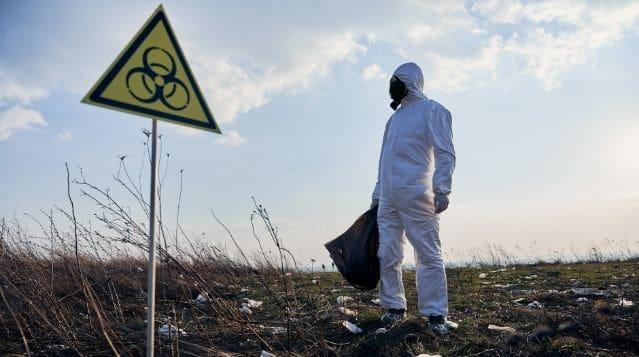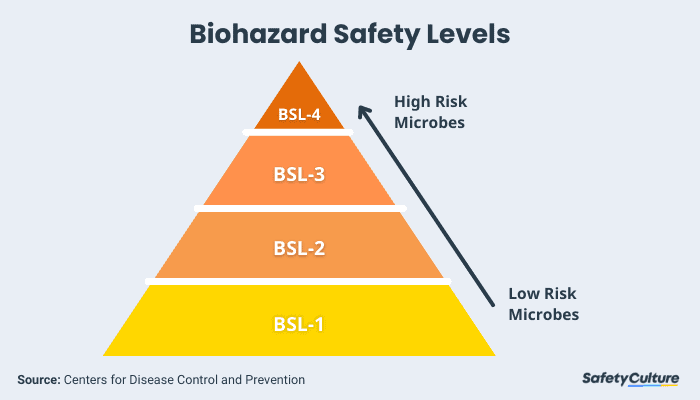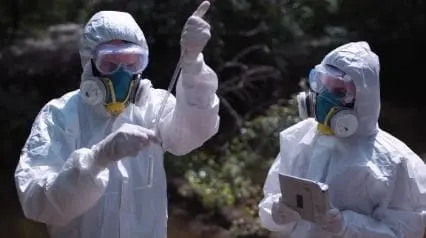What is a Biological Hazard?
Also known as a biohazard, a biological hazard pertains to any biological material, such as microorganisms, plants, animals, or their byproducts, that threatens the health of living organisms, most especially humans and animals. Potential biohazards should be handled with extreme caution as they may cause harm and can be fatal in certain cases.
Biohazards can be found anywhere, including the workplace. Hence, it’s crucial to be familiar with at least 10 biological hazard examples so that you have an idea on how to address certain risks that your workers are exposed to. Even more so, employers must establish safety guidelines to ensure minimal risks brought about by such workplace hazards, further keeping workers safe and healthy while on duty.
10 Biological Hazard Examples
While various workplaces and industries deal with different biohazards, there are common ones that pose major threats to the health and safety of the workers. Looking at each in detail, here are 10 biological hazard examples that your workers might be exposed to.
1. Human blood and blood products
Bodily fluids, tissues that contain blood, serum, plasma, and other blood components in liquid or semi-liquid form are examples of biological hazards.
2. Animal waste
Any animal body part or the beddings of infected animals are also considered as biological hazards.
3. Human bodily matter
Direct contact with biological hazards such as human bodily matter in the workplace—blood, saliva, urine, and mucus—is highly risky most especially to healthcare workers.
4. Microbiological waste
Usually found in laboratories, this waste may contain concentrated forms of infectious products, such as blood or bodily fluids that have infectious pathogens, specimen cultures, and viruses.
5. Pathological waste
This covers any human body part, tissue, or organ that may have been taken out during surgical procedures.
6. Sharps waste
Belonging to the larger group of infectious waste, this type of biological hazard pertains to syringes, sharp tools, and broken glass that are at risk of pathogenic cross-contamination and piercing through human skin protection.
7. Molds and yeasts
These are found in nature, needed for the breakdown of plant debris. Such microorganisms can enter a building directly or their spores can be carried in by the air. For some people, inhalation of the molds, fragments of the molds, or spores can lead to serious health problems or worsen certain health conditions.
8. Organic material
Workers may also be exposed to rubbish, waste water and sewerage, plant materials, and organic dust.
9. Airborne pathogens
Pathogenic microbes, which are small enough to be discharged from an infected person, are easily transmitted through sneezing, coughing, and direct or close contact.
10. Stinging insects
As these can be found throughout various geographic regions, stinging insects are especially dangerous to outdoor workers. Such insects include bees, wasps, hornets, and non-venomous and venomous spiders.
Improve your EHS Management
Cultivate a safe working environment and streamline compliance with our EHS solutions.
Explore nowBiohazard Safety Levels
As cited by Aftermath, the Centers for Disease Control and Prevention (CDC) lists the 4 biosafety levels, with each of them having specific controls to contain microbes and biological agents:
- Biohazard Level 1: Often pertains to agents that include viruses and bacteria, this biosafety level requires minimal precaution, such as wearing face masks and maintaining no close contact. The biological hazard examples in the first level include E.coli and other non-infectious bacteria.
- Biohazard Level 2: Usually causing severe diseases to humans, the second level classifies agents that can be transmitted through direct contact with infected materials. HIV and hepatitis B are some biological hazard examples that pose moderate risks to humans.
- Biohazard Level 3: Mainly through respiratory transmission, pathogens that are highly likely to become airborne can cause serious or lethal diseases to humans. Mycobacterium tuberculosis, the bacteria that causes tuberculosis, is an example of a level-3 biohazard.
- Biohazard Level 4: Extremely dangerous pathogens that expose humans to life-threatening diseases, the fourth and last level requires workers to utilize maximum protection and containment. Some biological hazard examples are the Ebola virus and the Lassa virus.
Per the given biosafety level, there are strict requirements when it comes to the laboratory design, Personal Protective Equipment (PPE), biosafety equipment, and other assets or tools used. Further, there are Standard Microbiological Practices to be enforced at all biosafety levels. The 10 biological hazard examples listed in this article may be categorized under each level depending on the potential risks involved. This is why conducting a job hazard analysis and a risk assessment are recommended to streamline safe and quality operations.
Regulations
According to the UK Health and Safety Executive (HSE), the Control of Substances Hazardous to Health Regulations 2002 is the main legislation applicable to biohazards. As a UK Statutory Instrument, the law describes general requirements on employers to protect their workers and other people from the hazards of substances. This must be enforced by doing the following:
- Identify the hazards, both present and potential
- Decide how to prevent harm to health through conducting risk assessments
- Provide control measures to reduce health risks
- Keep control measures in good working order
- Provide information, instruction, and training to employees
- Ensure there are monitoring and health surveillance as needed
- Establish emergency action plans
Create your own Hazard Identification Checklist
Build from scratch or choose from our collection of free, ready-to-download, and customizable templates.
Hazard Identification ChecklistsManage Biological Hazards Through Consistent Safety Training
Building a culture of safety starts with helping employees create and embody a mindset and attitude that prioritizes safety in the workplace. One way to incorporate this into an organization’s holistic approach is to provide regular training on safe work practices, covering biological hazards and other threats that employees may encounter.
Using a training tool like SafetyCulture (formerly iAuditor)’s Training is essential to streamline processes on conducting training for employees. With Training, organizations can monitor and follow up on course completion progress for compliance.
Monitor Biohazards Using a Powerful Tool
As a dynamic inspection software and mobile app, SafetyCulture lets you perform biological hazard assessments efficiently and accurately. In detail, you can do the following using the app’s unique features:
- Conduct hazard inspections by creating or downloading pre-made checklist templates and scheduling inspections so that your workers don’t miss a single routine check
- Assign team members to carry out corrective measures as soon as biohazards are detected or need to be monitored
- Generate reports based on the issues and other findings of your inspections and use them to formulate recommendations and action plans to maintain strict compliance with health and safety standards
- Analyze insights and data and assess the areas for improvement in biosafety protocols and hazardous waste management
- Instantly bridge the communication gap between leaders and frontline workers when it comes to the organization’s Standard Operating Procedures (SOPs) via the Heads Up feature





